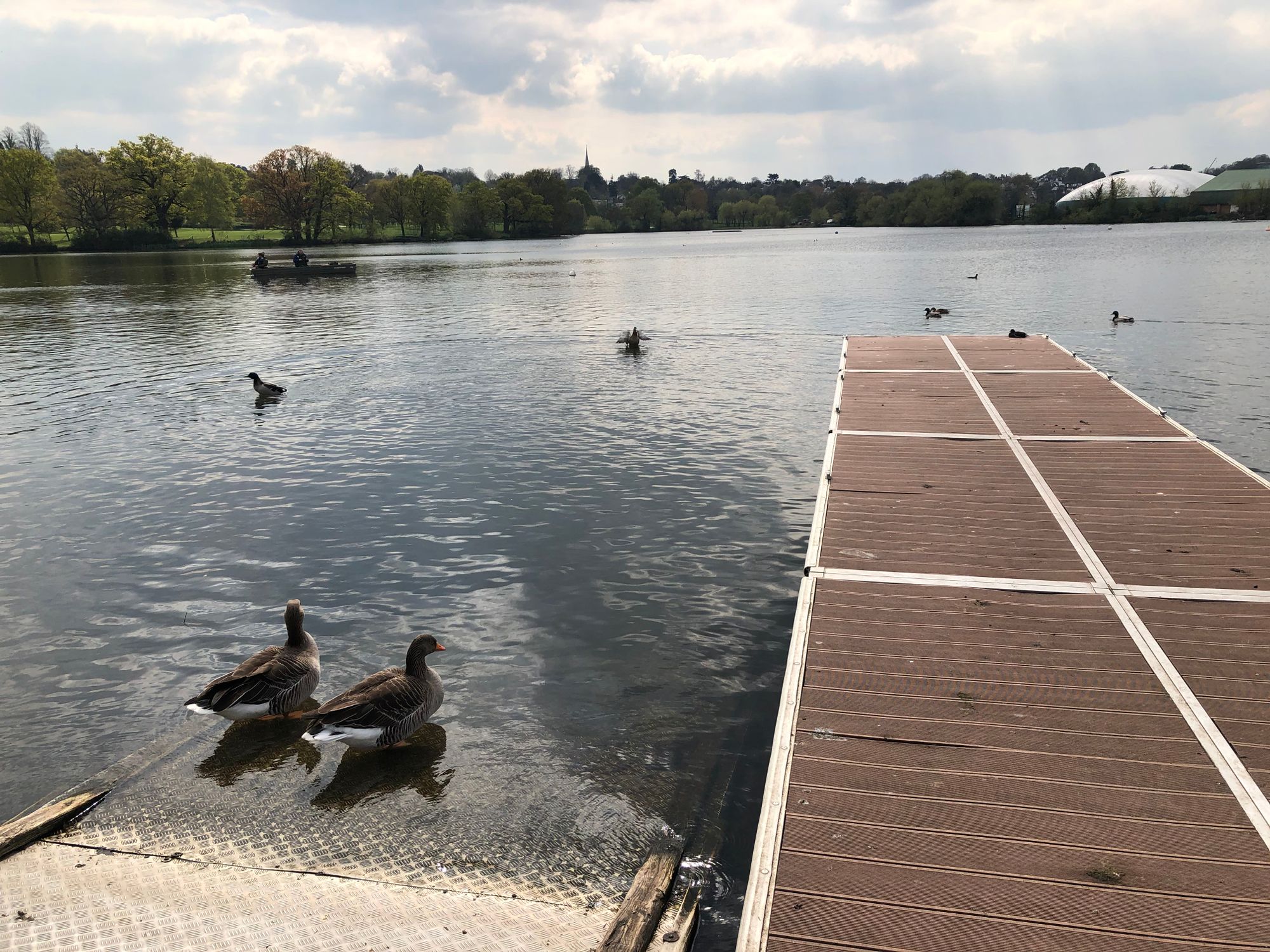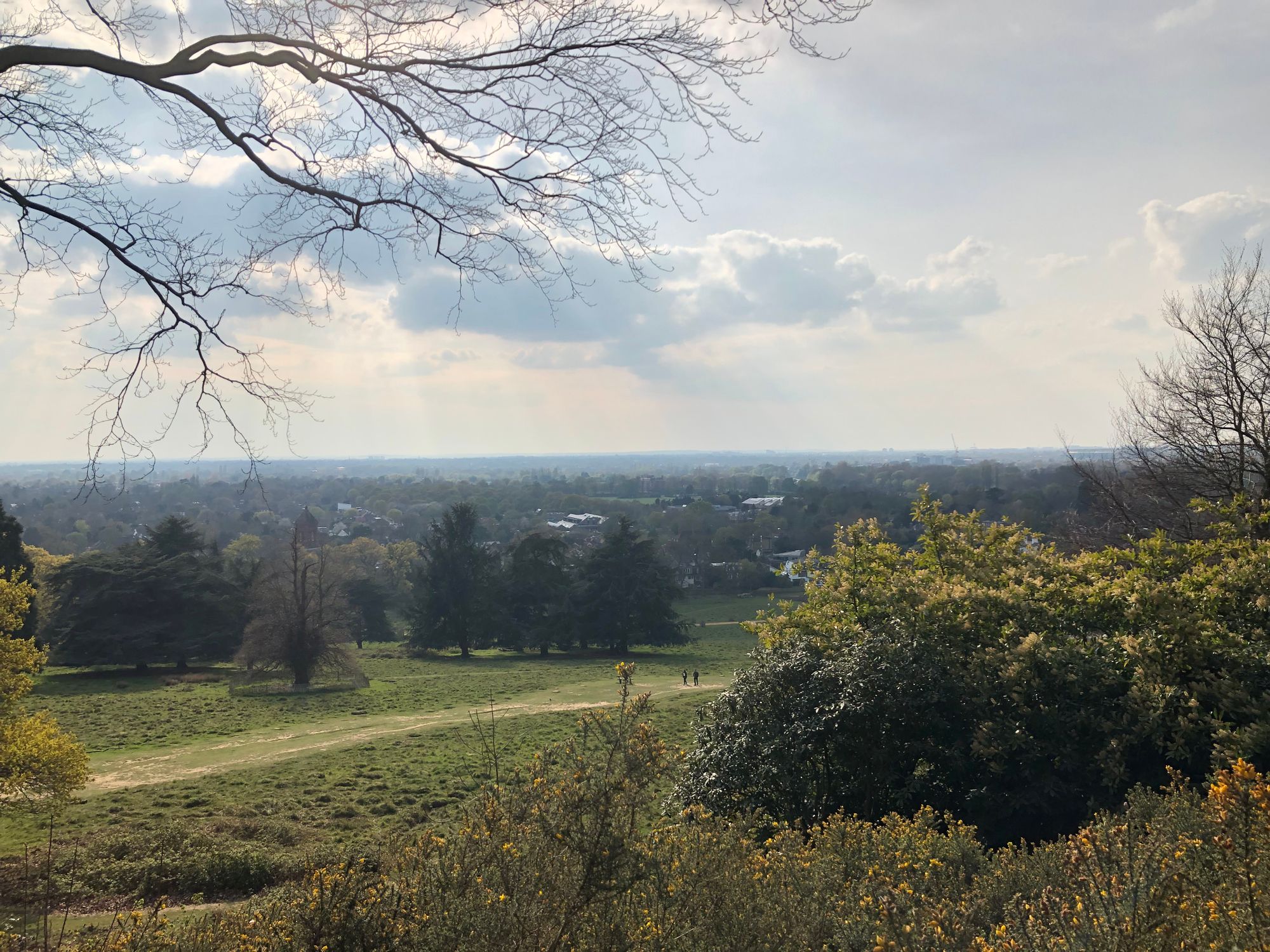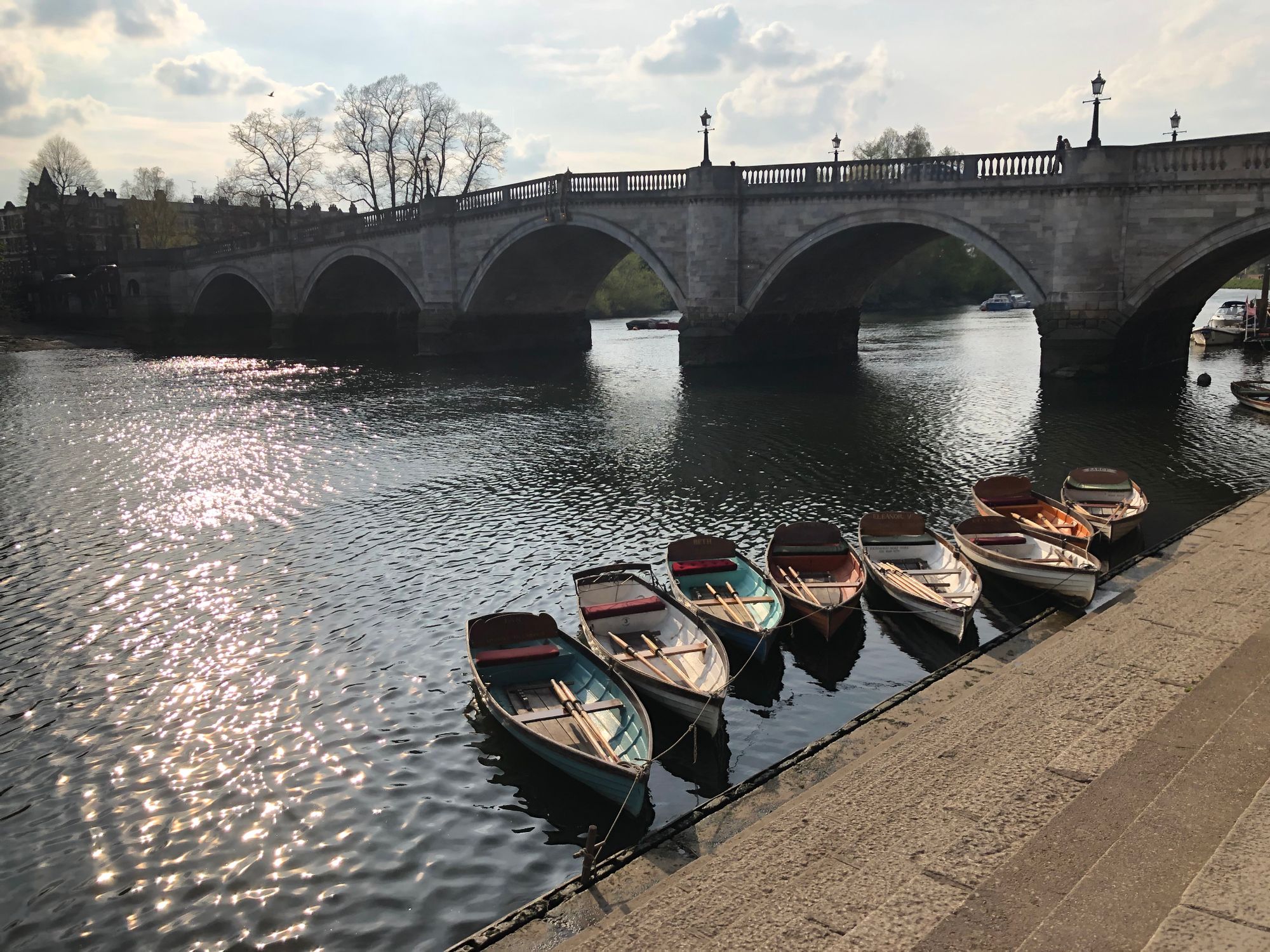Capital Ring Walk: Wimbledon Park to Richmond Bridge

The Capital Ring Walk is a 78-mile long circular route around London that passes through many of the capital’s lesser known neighbourhoods, divided into 15 smaller sections. This post follows on from my previous account of Sections 4 and 5, running from Crystal Palace to Wimbledon Park.
Section 6: Wimbledon Park to Richmond Bridge
We emerged from Wimbledon Park station on a sunny but crisp April afternoon, wondering where the time had gone. Last time we were here it was October 2016, making the last two-and-a-half years the longest hiatus so far in our circuit of London.

There was a comforting familiarity to the green Capital Ring signs that greeted us outside the station, and we were soon back in the swing of things, the route unspooling like a conversation with an old friend you've not seen in a while. We crossed Wimbledon Park, where couples with young kids were feeding ducks and geese, the lake rippling under a sky that hung somewhere between spring and summer. On the other side of the lake we could see the green bulk of the All England Lawn Tennis & Croquet Club, home of the world's most famous tennis championships.

After leaving the park we walked briefly uphill before plunging into the next green space, Wimbledon Common. One of the surprising discoveries we've made on the Capital Ring has been just how many areas of woodland cling on amongst London's urban sprawl, and once again we found ourselves surrounded by trees. We searched in vain for wombles lurking in the undergrowth.
Another surprising feature of the Common was Wimbledon Windmill, the last remaining hollow post flour mill in the UK. If you don't know the difference between a hollow post mill and a tower mill then Wimbledon Windmill is the place for you, as the building houses a surprisingly interesting museum on the history of windmills. The best exhibit was a collection of working models of various types of windmill, from the classic Dutch style that most of us would recognise, to more unusual designs from Greece and ancient Persia.

From the windmill the route took us across a golf course, where we stopped for a snack on a park bench. Leaving the Common we reached the A3, the only busy road on what turned out to be a very green and peaceful section of the Capital Ring. Just across the road was the entrance to Richmond Park, and next to it Stag Lodge Stables. At the pedestrian crossing were the first traffic lights I've ever seen designed specifically for horse riders; we were clearly now deep into the poshest reaches of south west London.
Neither of us had been to Richmond Park before, and we hadn't quite realised the scale of the place. The park rambles over some 2,360 acres, more than three times the size of Hampstead Heath, and is an important habitat for wildlife including woodpeckers, stag beetles and, most famously, deer. There are around 630 red and fallow deer in Richmond Park, though we didn't spot any amongst the tufty grass and gnarled oaks.

We did see plenty of ducks, swans and geese waddling around by Pen Ponds, and every so often a squadron of parakeets would fly squawking overhead. These bright green birds look somewhat incongruous in our northerly latitudes, and indeed they're not native to the UK; London's parakeets are the descendants of pets that either escaped or were freed from captivity, avian interlopers originally from Africa or South Asia.

As well as colourful wildlife, Richmond Park is also full of history. Just off the Capital Ring route is Pembroke Lodge, originally the home of the park's molecatcher and later the residence of Lord John Russell, who twice served as prime minister under Queen Victoria. Within the gardens of Pembroke Lodge is an old barrow known as King Henry's Mound, where Henry VIII is said to have stood waiting for the signal that Anne Boleyn had been executed, freeing him to marry Jane Seymour.
The most remarkable thing about the mound is the view of St Paul's Cathedral, one of several 'protected views' of London landmarks which developers are not allowed to encroach upon with new buildings. The cathedral is perfectly framed by the trees, and as we squinted through the telescope that sits on top of the mound we were amazed to see the familiar dome, without a single one of the City's ever-growing forest of skyscrapers interrupting our line of sight.

After rejoining the path we headed across Petersham Meadows onto the towpath by the Thames, the first time we'd encountered the river on the Capital Ring since we were in Woolwich nearly four years ago. The Thames at Richmond is a completely different river; where Woolwich is grey and urban, Richmond is green and bucolic, to the extent that you can scarcely believe you're in London at all. Rowers were out practising in their canoes, locals were strolling along in their gilets and wraparound shades, and the approach to Richmond Bridge was overhung by trees erupting with pink spring blossom.

The bridge is the end point of Section 6, and we celebrated another milestone with a pint at the White Cross pub looking out across the river. We're now two thirds of the way around the Capital Ring, with just five sections left between Richmond Bridge and Highgate, the place where we began our circular journey way back in June 2014.


